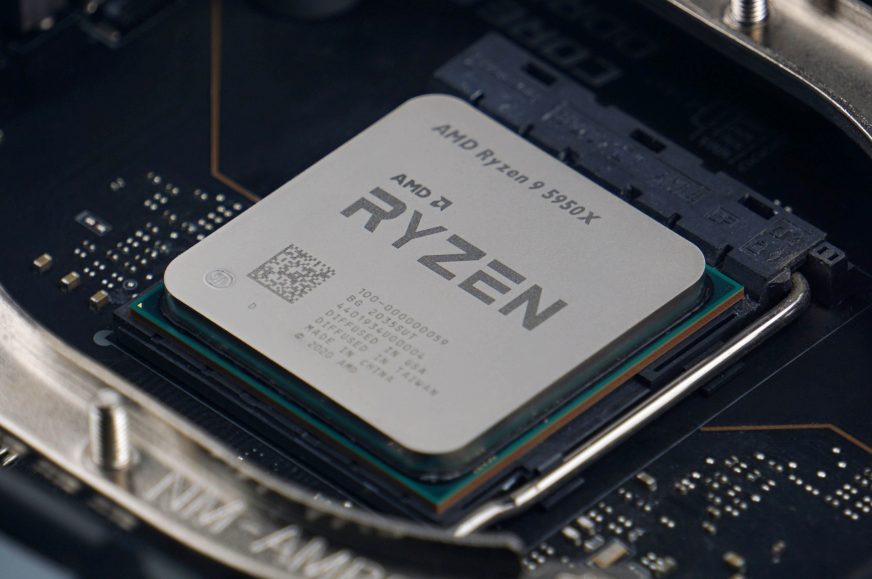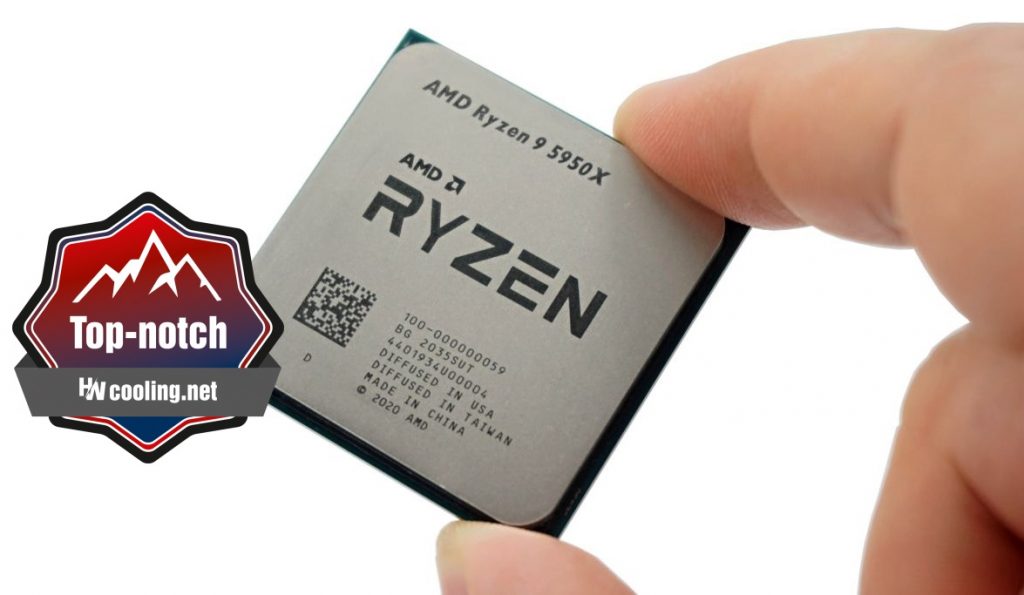Conclusion
The Ryzen 9 5950X is the highest performance processor designed for the “small” AMD AM4 socket. At the same time, it is a rarity that has essentially no competition (Intel has nothing against it) and is roughly halfway to high-end Threadrippers. Compared to those, however, it has a higher gaming performance and a cheap motherboard will also suffice. This processor is even sometimes more power-efficient than the slower 5900X.
Conclusion
It would be quite boring to analyze in detail and evaluate the gaming performance of the R9 5950X after the R9 5900X. Although there are games and settings where this processor performs slightly better compared to the Ryzen 9 5900X (biggest difference from the tested games is in F1 2020), but also vice versa, where it loses negligibly. On average, however, both Vermeer Ryzen 9 processors are exceptionally balanced, in QHD resolution they even have exactly the same point gain (2100.5 points). Compared to the Core i9-11900K, the R9 5950X is faster at lower resolutions (1080p) and with very low settings, such as 720p@low, which doesn’t speak much for real use and is rather about “synthetics”.
In more practical resolutions for high-priced setups, the Ryzen 5950X negligibly loses to the most powerful Rocket Lake. However, the fight is extremely balanced, so that at the level of average performance of all games, the analysis loses its meaning, because the difference is less than 1%.
Due to its high price, the Ryzen 9 5950X is a relatively disadvantageous processor for a primarily gaming PC. Even if you want to capture image with the x264 encoder while playing. In OBS, the performance drop with the 5950X is a bit lower, but in the alternative application Xsplit, it is ironically the opposite way. So, these processors are balanced even in this respect. If the primary focus is gaming, then the price-performance ratio is clearly on the side of the 12-core 5900X model. The high surcharge for the higher performance Ryzen 9 5950X is only justified if most of the time the processor is used for business purposes, and where particular applications benefit from four extra cores. That is typically 3D rendering and video encoding. These tasks usually scale well with multi-core processors, such as the Ryzen 9 5950X.
The R9 5950X is also interesting for Adobe Premiere Pro users who work with ProRes or RED formats, where the performance gain is at the level of the average increase in application performance compared to the 5900X, which is 20%. Such a performance increase also corresponds to multithreaded tasks in Affinity Photo or in modern AI Topaz Labs applications for photo enhancing. The most significant performance increase is in encryption and decryption. However, when inspecting the graphs, you will also come across results where the Ryzen 9 5950X is weaker than the 5900X. This is due to the inefficient management of so many cores. In practice, however, it is a relatively rare phenomenon to see the R9 5950X slower.
An attractive finding in this non-competitive environment (comparing the R9 5950X to the R9 5900X) is that the 16-core Ryzen 9 typically consumes less energy than its four-core leaner sibling in a proper multithreaded load. And this is despite the higher performance of the R9 5950X. The slower Ryzen 9 5900X in this comparison achieves lower efficiency (performance per watt) because it pushes the clock speed more aggressively. The Ryzen 5950X achieves about 300 MHz less in all-core boost, but it does not weigh as much as the smaller core (and thread) count of the 5900X. In games, however, the power consumption of the R9 5950X is already higher. This is because multiple cores are active under a relatively low load. For this reason, the 5950X has higher power consumption even when idle. But it’s never dramatic, and the difference is always a few watts (5–10 W), give or take.
It is noteworthy that despite the higher power consumption in games, the temperatures are lower. Of course, different per piece quality of the TIM (solder) may also be responsible for the small distortion, but this is also because the active cores operate over a larger area and there is a greater distance between them.
TL;DR: The Ryzen 5950X can hardly be criticized, although it is designed for specific users. You can also have very high multithreaded performance on a cheap motherboard (literally, a simple VRM is enough for those 140 W), which is also seconded by top gaming performance. Therefore, we haven’t hesitated for long to give it our “Top-notch” award.
| AMD Ryzen 9 5950X |
| + Amazing single-thread performance |
| + Up to 16 cores and 32 threads on the mainstream AM4 platform |
| + Extreme multithreaded performance considering the CPU segmentation |
| + High IPC |
| + Perfect energy efficiency (better than with the R9 5900X except for games) |
| + Higher gaming performance in lower resolutions (including FHD and below) than the Ci9 Rocket Lake |
| + Modern 7 nm manufacturing process |
| - Certain applications may not efficiently manage 32 threads, and performance below the R9 5900X can rarely be achieved |
| - No integrated GPU |
| Approximate retail price: EUR 799 |
We’ve got the games for our tests from Jama levova
Special thanks to Blackmagic Design (for a license to DaVinci Resolve Studio), Topaz Labs (for licenses to DeNoise AI, Gigapixel AI and Sharpen AI) and Zoner (for a license to Photo Studio X)
- Contents
- AMD Ryzen 9 5950X in detail
- Methodology: performance tests
- Methodology: how we measure power draw
- Methodology: temperature and clock speed tests
- Test setup
- 3DMark
- Assassin’s Creed: Valhalla
- Borderlands 3
- Counter-Strike: GO
- Cyberpunk 2077
- DOOM Eternal
- F1 2020
- Metro Exodus
- Microsoft Flight Simulator
- Shadow of the Tomb Raider
- Total War Saga: Troy
- Overall gaming performance
- Gaming performance per euro
- PCMark and Geekbench
- Web performance
- 3D rendering: Cinebench, Blender, …
- Video 1/2: Adobe Premiere Pro
- Video 2/2: DaVinci Resolve Studio
- Grafické efekty: Adobe After Effects
- Video encoding
- Audio encoding
- Broadcasting (OBS and Xsplit)
- Photos 2/2: Adobe Photoshop and Lightroom
- Photos 2/2: Affinity Photo, Topaz Labs AI apps, ZPS X, …
- (De)compression
- (De)cryption
- Numerical computing
- Simulations
- Memory and cache tests
- Processor power draw trend
- Average processor power draw
- Performance per watt
- Achieved CPU clock speed
- CPU temperature
- Conclusion










